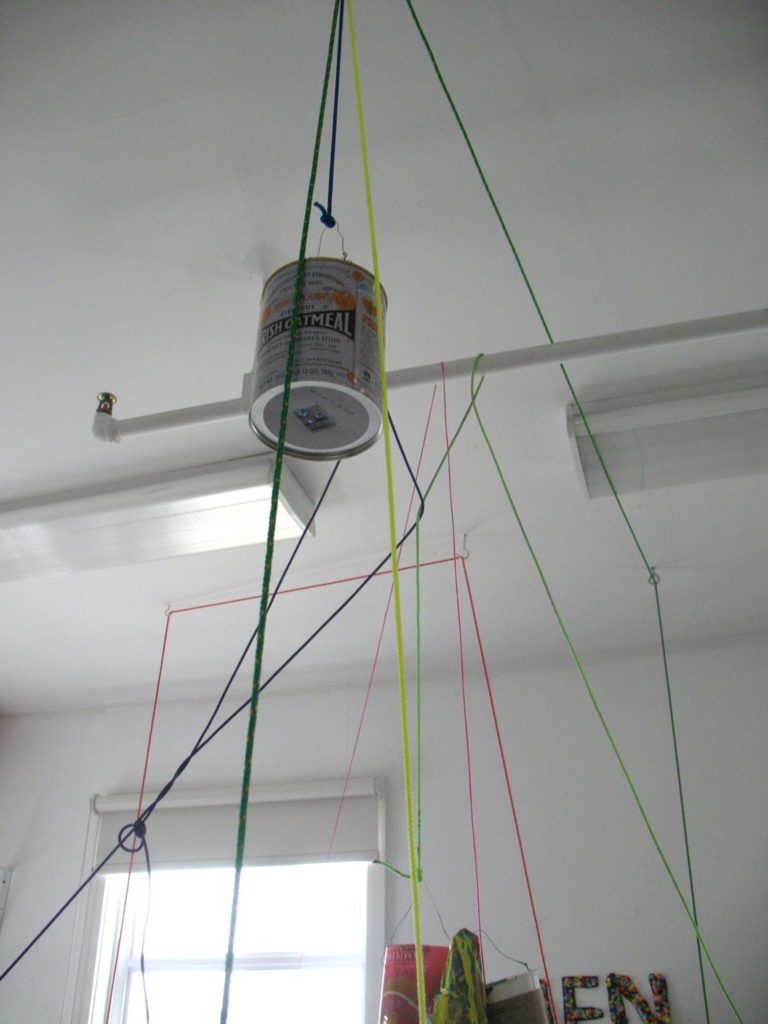PRESENT AN ALIEN FROM OUTER SPACE with an illustrated time line of Western art—from, say, Theodoros of Samos to selected offerings from any museum of contemporary art.
Ask the fellow if he can tell which end of the time line is the beginning. [It is not a trick question. We just do not know whether aliens read from left to right or the other way around.] If the frequencies along his optic nerves run as ours do, and if he has his wits about him, he will choose, with confidence, the contemporary stuff as the slime from which Theodore eventually emerged.
Even as early as the 6th century BC, artists of the Archaic period were known to sign their works.
Signatures appear on statues and vases. A century later, in what we think of as the Classical period, treatises by artists on art begin to appear. Painters in the 4th century BC wrote about their craft: symmetry, color, subject matter. While none of these have actually survived, we know of them through references that have survived. Most likely, they were in the vein of technical manuals, similar to ones written in the Middle Ages. Still, their existence—such that we know—gives evidence of a self-consciousness among ancient that corresponds to that of our own age. In short, a view of artmaking as something that entails an intellectual dimension goes back aways.
How, then, to explain the devolution of art from Pamphilos and Apelles to, say, Richard Tuttle, Jessica Stockholder or the carloads of shmearers who adopt the manner of earlier modernists with none of their substance ? Heaven knows, a Total Explanation is far beyond my pay grade. But I am up for, at least, one inkling: erosion of respect for manual labor. Raised in the cocoon of modern affluence and the self-regarding ethos of the academy, artists confuse intellectualism with intelligence. That confusion permits derision of technical knowledge and manual grace as “mere skill.” As if skills were a category too lumpen—too blue collar—for a college grad to greet with more than a passing nod.

The rush to disassociate ourselves from the work of hands is typified in Sydney Hermant’s master’s theses, on display at the University of British Columbia. [It could be anywhere, but this is a sample that just came in over the e-transom.] Ms. Hermant takes a page out of Jessica Stockholder’s play book. Ms. Stockholder is a department head at Yale; Ms. Hermant is in Vancouver. No matter. The give-a-damn anaesthesia on show has gone global. It looks the same everywhere.
The installation is a magpie jumble of acrylic paint, paint cans (elegantly termed vessels in the press release), newspapers, glue, chicken wire, fibreboard and rope. Dimensions are congenially variable. The University gallery bills the work this way:
Sydney Hermant’s aggregates of disposable materials and automatic processes result in sculptural installations of petrified paint. She uses ubiquitous materials such as coffee cups and plastic bottles to enact precariously balanced systems of materials that drip paint to make artwork over time. Her practice embraces a variety of forms that reflect on the notions of productive and unproductive uses of free time through rigorous hobbyism.
There is a phrase to love: rigorous hobbyism. As unemployment stretches skyward, rigorous hobbyism could really catch on. It would lend contemporary art the social function it craves for itself.
Ms. Hermant’s master’s thesis at the University of British Columbia, where her aggregates of detritus will be on view, is heir to Duchamp’s Fountain. While the urinal, in its day, was more or less a one-off, by now the overwhelming proportion of academically-approved art shares its nature and attributes. Post-modernist is really not the word for it. This sort of thing is post-industrial folk art. It carries papers, authorized from institutions in the business of selling credentials instead of skills.
More than two decades ago, Peter Fuller commented on the phenomenon:
In my time as a critic, considerable prominence has been give to ‘works of art’ of a kind previously unseen. That is, works which embody no imaginative, nor indeed physical [emphasis mine], transformation of materials; no sense of belonging to any of the particular arts, such as painting, sculpture, drawing, engraving, etc.; no sense of tradition or skill. Such works possess no identifiable aesthetic qualities and offer, in my view at least, no opportunity for aesthetic experience or evaluation.
Fuller laid the blame at the door of art education, a movement—and it is that—debilitating the concept of fine art. He takes aim at “art educationalists” who debunk Beauty as a necessary quality and “Craft, with its necessary connotation of old-fashioned hard work.”
So far, so good. And true. But what comes next leaves us back where we started, mired in the overall anaesthetization of the culture. Where does Fuller turn for help in reversing contemporary hostility toward the very idea of aesthetic values? To Prince Charles! The Prince of Wales has gone mano-a-mano with the architectural establishment over the years. There is no taking that away from him. But his spats have been more about ideology—sustainability—than aesthetics. And Poundbury, his master project and dream village, is no jewel in his crown as either an architect or an urban planner. Critics say it is falling apart, due to inferior materials and—wait for it—lack of skills. But, oh! The concept! The intention!
More on this tomorrow, Labor Day.
© 2010 Maureen Mullarkey
Update: Someone emailed to ask if a drug dealer could be considered a rigorous hobbyist. Yes, I think so. Though I like undocumented pharmacist better.
Note: The original image of Hermant’s work has dropped off the web. Hence, a slightly more recent replacement.


